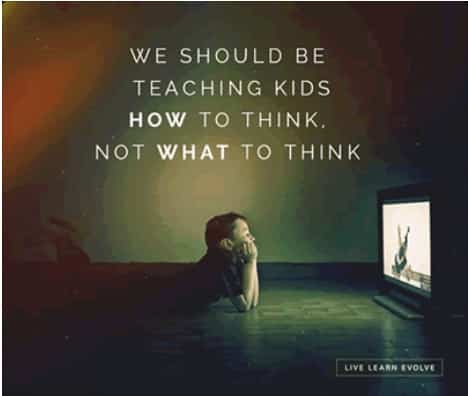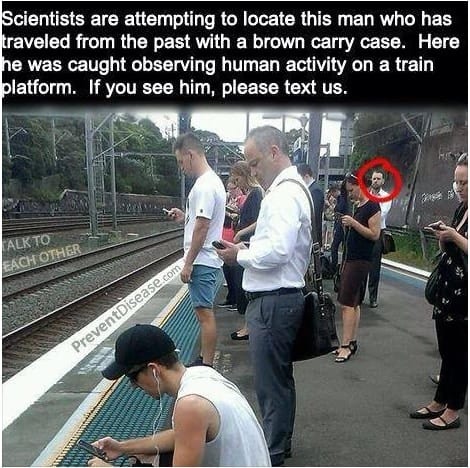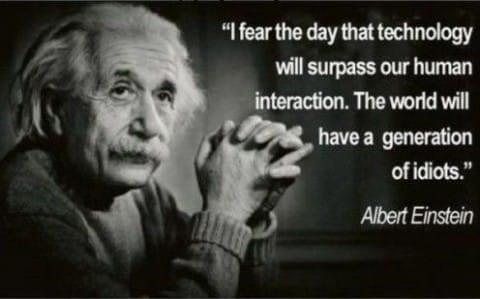(Photo credit: The Mind Unleashed)
(photo credit: Blindfold)
With technology having taken hold of society, there are conflicting views and perceptions of how to view this up and coming generation. The debate centers on how children should learn and be evaluated. Will technology surpass human interaction in the classroom? Is there still room for socialization in our hi-tech world?
A popular meme. The quote is falsely attributed to Einstein but speaks to our fears of our current technological reality.
Socialization may be hampered by technology, but technology is undeniably necessary. Without technology, we would not have, for instance, the Pillcam (aka capsule endoscopy), now the gold standard for intestinal visualization. Without technology, we could not Skype with a grandmother many thousands of miles away.
Should technology change our focus in the classroom? In today’s modern, technological world, should we focus on a child’s strengths or weaknesses or a combination of both? Many teachers choose to dedicate their professional lives to educating the next generation while other teachers talk about being boxed into an outdated and generalized rote curriculum. The typically structured lessons offers just enough time to cover concrete to abstract learning concepts without breaking down the picture, as much as is necessary for fully absorbing lessons.
If we want to enable students to learn for life rather than for a test, the topic must be divided into four levels: the concrete, the semi-concrete, the semi-abstract, and the abstract. Manipulatives—things that can be touched and moved—can be used to help the student master the first, concrete level of learning. Getting to the semi-concrete and semi-abstract levels is a bit harder these days, due to the ever present flow of images provided by computers. Exposure to constant images comes with the result that visual imagery is compromised in many students. Helping children to reach the semi-concrete and semi-abstract levels helps support their working memory by helping them to create “mind pictures.”
Incorporating pictorial representations into lessons, so as to absorb the semi-concrete and semi-abstract levels of learning, is effected by having students design, interpret, and read information in an organized format. Students can create drawings, graphs, diagrams, charts, and graphic visual organizers. Finally, the students can apply the abstract (symbolic representation) by demonstrating the understanding and use of letters, numbers or topic. The sequence of concrete followed by pictorial to abstract creates a strong foundation for learning.




Nessun commento:
Posta un commento